 Many people know what April showers bring, but what about May flowers? What do they bring? One word: bugs. Warm weather invites many out of hibernation, and that includes insects. June's pleasant temperatures have bees buzzing, butterflies fluttering, ants picnicking, and termites getting ready to feast. Most can appreciate the need for bees pollinating, enjoy a butterfly's beauty, and love to hate ants, but termites illicit a very different reaction. These pests have the potential to inflict serious damage to your home, and are the bane of homeowners.
Many people know what April showers bring, but what about May flowers? What do they bring? One word: bugs. Warm weather invites many out of hibernation, and that includes insects. June's pleasant temperatures have bees buzzing, butterflies fluttering, ants picnicking, and termites getting ready to feast. Most can appreciate the need for bees pollinating, enjoy a butterfly's beauty, and love to hate ants, but termites illicit a very different reaction. These pests have the potential to inflict serious damage to your home, and are the bane of homeowners.
One of the major things termites need to thrive is warm climates. As the temperature rises, so too does the potential for termite infestations. With spring turning into summer, it's important to be able to recognize the conditions conducive to termite infestations and learn how to protect your home from these unwanted inhabitants.
Subterranean termites typically cause the most structural damage and are most prevalent in the southern coastal areas, the dry climate of the Okanagan areas of British Columbia, southern Ontario, southern Quebec, and the Maritime provinces. Though each species of termite thrives in different climates and eats different types of food, all termites require four things to survive:
1. Food
2. Moisture
3. Shelter
4. Optimal temperatures
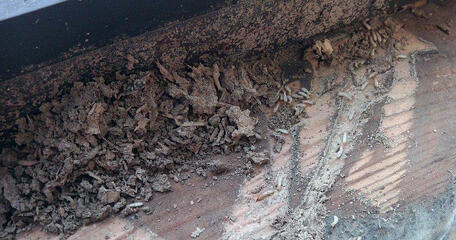
These conditions can be found in all buildings, regardless of their construction type. However, older homes typically face increased termite threats as wood rot is more common in them.
As with the normal approach taken when dealing with other pests, the best way to prevent a termite infestation is to reduce access to food and water sources. For termites, this means eliminating moisture and removing wood sources, including wood piles and mulch close to the home. Rotted wood is by far the most common way for termites to gain entry into the home. The soft, pulpy material gives termites easy access to both food and moisture. If you have concerns about a termite infestation in your home, consider:
- Removing all wood debris in contact with soil and store any firewood away from your home and off the ground.
- Fixing any leaks in pipes and drains - damp wood creates ideal conditions for a healthy, large, and robust termite colony.
- Making sure the soil around the structure of your home is sloped away from the home, and that drainage from the roof doesn't collect near the property.
- Trimming dense vegetation from around the siding and foundation of your home.
- Insulating or putting down a moisture barrier to help limit the humidity and condensation in your crawl space, as this can be inviting to termites.
- Replacing mulch that is close to the home with gravel. If mulch is used around the home, make certain to keep the mulch layer as shallow as possible; thick mulch beds create soil moisture conditions that encourage termite activity.
Unlike other pests, termites are typically very hard to detect. With the exception of annual swarms, when reproductive termites move to start new colonies, termites live primarily out of sight. So how can you tell if something you can't see is occupying your home? There are a few termite signs that can indicate an infestation. Watch out for:
- Hollow-sounding wood - if wood sounds hollow when tapped it may be because termites are eating the wood from the inside out
- "Swarmers" (a group of winged insects), or discarded wings - reproductive termites, also known as "swarmers", take flight to create new colonies; swarming termites, or groups of discarded wings is a fairly conclusive sign of an infestation
Tip: Subterranean termites typically swarm in the spring
- Mud tubes on walls - termites construct mud tubes to travel between their home in the soil and the wood that they feed on; these tubes also provide moisture which the termites search for food
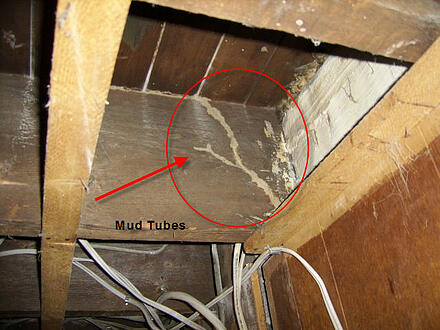
- Frass" - termites produce this wood-coloured dropping as they eat their way through wood rot
If you have termites in your home, it's essential to reach out to a professional pest control company to help you address the issue - quickly. Termites can cause the most structural damage of any insect and, based on the extent of the damage, remediation expenses can run well into the thousands of dollars. Treatment methods vary based on the species of termite, size of infestation, and other factors. The required chemicals for termite treatment are not for sale to the public, and must be used in strictly controlled conditions. Your licensed pest management professional can set up the best corrective steps if you have a termite infestation.
Orkin Canada, a leading name in pest control in Canada and our Specialty Services partner, can assist Carson Dunlop clients and real estate partners with termite-related inquiries, including termite inspections and treatment plans. To learn more please call 800-268-7070.


 In an effort to help better inform first-time home buyers, the Royal Bank of Canada (RBC) has developed an initiative on Twitter to provide users with easy access to real estate experts and resources. RBC runs #RBCFirstHome Twitter chats frequently, and they’ve graciously asked us to contribute to the last few sessions. These chats aim to assist with the
In an effort to help better inform first-time home buyers, the Royal Bank of Canada (RBC) has developed an initiative on Twitter to provide users with easy access to real estate experts and resources. RBC runs #RBCFirstHome Twitter chats frequently, and they’ve graciously asked us to contribute to the last few sessions. These chats aim to assist with the  Your real estate agent will usually provide a list of three companies that they recommend, but will leave the final decision up to you. You do not have to choose an inspector from that list, but it does give you a good place to start. In terms of evaluating an inspector to see if they are right for you and your home there are many qualities to consider. We recommend that you focus on experience and education, and ensure that the report includes the information that you require in an easy to understand format. Many people tend to focus on the cost of the inspection, and while we understand that it’s important to stay within your budget, going with the least expensive option can sometimes cost you in the long run. Buying a home is arguably the biggest investment you will ever make in your life, so spending the money on a qualified professional to educate you on the home you're buying is an essential part of the buying process. If you aren't sure what to consider, check out our guide on
Your real estate agent will usually provide a list of three companies that they recommend, but will leave the final decision up to you. You do not have to choose an inspector from that list, but it does give you a good place to start. In terms of evaluating an inspector to see if they are right for you and your home there are many qualities to consider. We recommend that you focus on experience and education, and ensure that the report includes the information that you require in an easy to understand format. Many people tend to focus on the cost of the inspection, and while we understand that it’s important to stay within your budget, going with the least expensive option can sometimes cost you in the long run. Buying a home is arguably the biggest investment you will ever make in your life, so spending the money on a qualified professional to educate you on the home you're buying is an essential part of the buying process. If you aren't sure what to consider, check out our guide on  It’s mid-June, and you know what that means: Dad’s big day is just around the corner. That’s right; Father’s Day is this Sunday. Are you ready to celebrate? Or are you having difficulty buying for the man that apparently, especially when you ask him, wants for nothing? Instead of opting for the traditional tie and coffee mug, this year, try doing something for Dad.
It’s mid-June, and you know what that means: Dad’s big day is just around the corner. That’s right; Father’s Day is this Sunday. Are you ready to celebrate? Or are you having difficulty buying for the man that apparently, especially when you ask him, wants for nothing? Instead of opting for the traditional tie and coffee mug, this year, try doing something for Dad. Like the individuals who create and take care of them, every yard or garden is different. Some are a testament to organization; others cultivate a more natural aesthetic. Depending on the way your garden is laid out you may have to do some minor trimming. If you have any shrubs, hedges, or trees near the foundation of your home, it’s a good idea to pull branches and trim excess leaves away from the home. This will help to let sunlight into the home, curb the bugs that wish to access the home, and assist with water management.
Like the individuals who create and take care of them, every yard or garden is different. Some are a testament to organization; others cultivate a more natural aesthetic. Depending on the way your garden is laid out you may have to do some minor trimming. If you have any shrubs, hedges, or trees near the foundation of your home, it’s a good idea to pull branches and trim excess leaves away from the home. This will help to let sunlight into the home, curb the bugs that wish to access the home, and assist with water management.

-may.jpg) There's no denying it, spring has sprung. The sun is shining, flowers are blooming, and the birds have returned to nest. Though we now appreciate this perfectly-temperate weather, ideal for picnics and baseball, experience tells us it will not last long. The extreme heat of summer is coming - you know, the record highs you swore you wouldn't complain about when you were knee-deep in snow, shoveling your driveway through gritted teeth. Although most of us are thrilled to be free of winter's ice and snow, heat waves and severe humidity are not the most comfortable weather systems either, and soon the complaints will start to flow.
There's no denying it, spring has sprung. The sun is shining, flowers are blooming, and the birds have returned to nest. Though we now appreciate this perfectly-temperate weather, ideal for picnics and baseball, experience tells us it will not last long. The extreme heat of summer is coming - you know, the record highs you swore you wouldn't complain about when you were knee-deep in snow, shoveling your driveway through gritted teeth. Although most of us are thrilled to be free of winter's ice and snow, heat waves and severe humidity are not the most comfortable weather systems either, and soon the complaints will start to flow.
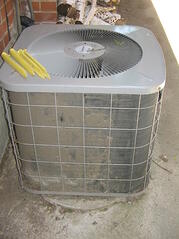 It's important to make sure the condenser is on level ground (within roughly 10 degrees). The compressor or the refrigerant lines may be damaged if the unit is not level. So if your unit is on ground that is sloping towards or away from your home, this should be addressed.
It's important to make sure the condenser is on level ground (within roughly 10 degrees). The compressor or the refrigerant lines may be damaged if the unit is not level. So if your unit is on ground that is sloping towards or away from your home, this should be addressed. Many homeowners will have taken this past long weekend as an opportunity to get some much needed spring cleaning done. The beginning of warmer weather brings with it many chores – some cosmetic (like cutting the grass and pulling weeds), and some more practical (like cleaning the gutters and changing the screens on your windows). When it comes to spring cleaning, we encourage homeowners to focus on function over fashion, and ensure that their home systems are working well and ready for the change in season, before tending to their gardens.
Many homeowners will have taken this past long weekend as an opportunity to get some much needed spring cleaning done. The beginning of warmer weather brings with it many chores – some cosmetic (like cutting the grass and pulling weeds), and some more practical (like cleaning the gutters and changing the screens on your windows). When it comes to spring cleaning, we encourage homeowners to focus on function over fashion, and ensure that their home systems are working well and ready for the change in season, before tending to their gardens.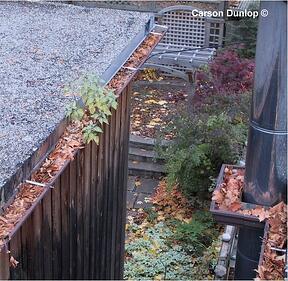 Get the dirt and leaves out of your gutters – We mention your gutters almost every time we address water issues and maintenance tasks to complete around your home, but that’s because
Get the dirt and leaves out of your gutters – We mention your gutters almost every time we address water issues and maintenance tasks to complete around your home, but that’s because 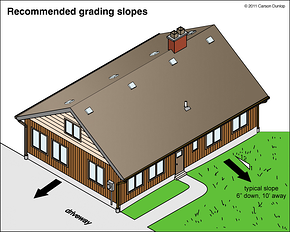
 Spring has arrived and although it’s not as warm as some of us would like, we are still counting our blessings that it’s rain and not snow falling from the sky – sorry Eastern Canada, we know it will stop snowing over there soon, probably. As the increase in temperatures has you setting aside your winter wear for more seasonally-appropriate garb, it’s equally important to make sure your home is ready for the change in weather.
Spring has arrived and although it’s not as warm as some of us would like, we are still counting our blessings that it’s rain and not snow falling from the sky – sorry Eastern Canada, we know it will stop snowing over there soon, probably. As the increase in temperatures has you setting aside your winter wear for more seasonally-appropriate garb, it’s equally important to make sure your home is ready for the change in weather.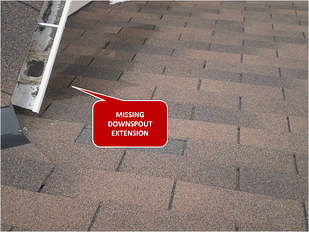 Roofs take the brunt of winter weather abuse. Now that your roof is free of ice and snow, it’s a great opportunity to see what condition it is in.
Roofs take the brunt of winter weather abuse. Now that your roof is free of ice and snow, it’s a great opportunity to see what condition it is in.  We recommend testing your smoke and carbon monoxide detectors on a monthly basis, and changing these devices’ batteries twice a year. You should have at least one smoke alarm on every floor of your home, although having more is encouraged. When testing to make sure your smoke detector is working, check the expiry date printed on the smoke detector. If the unit is past this date, or if it is more than ten years old, it should be replaced. If there is no expiry date, it’s probably more than ten years old.
We recommend testing your smoke and carbon monoxide detectors on a monthly basis, and changing these devices’ batteries twice a year. You should have at least one smoke alarm on every floor of your home, although having more is encouraged. When testing to make sure your smoke detector is working, check the expiry date printed on the smoke detector. If the unit is past this date, or if it is more than ten years old, it should be replaced. If there is no expiry date, it’s probably more than ten years old. Spring is known as one of the busiest seasons for real estate and this one is no exception. F
Spring is known as one of the busiest seasons for real estate and this one is no exception. F When vetting your
When vetting your 
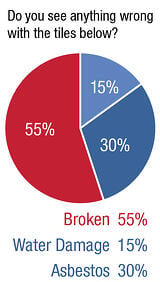
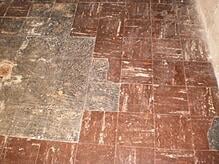
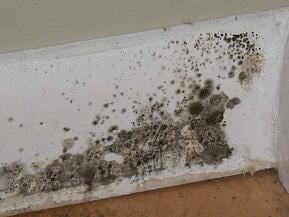
 The
The  The spring real estate market has begun, and as it heats up many home buyers are preparing to go to war. Bidding wars are not a new phenomenon – especially in Toronto - however the public’s willingness to participate in these wars is starting to shift. The Globe and Mail recently reported on a survey conducted by Pollara for BMO, which showed that “34 per cent of Canadians surveyed are willing to enter a bidding war when it’s time to buy a home, an increase of six points, or 21 per cent, from a year ago.”* These figures are even higher when you look exclusively at Toronto, where “the appetite for competitive bids among major cities is the highest in Toronto, at 44 per cent.”*
The spring real estate market has begun, and as it heats up many home buyers are preparing to go to war. Bidding wars are not a new phenomenon – especially in Toronto - however the public’s willingness to participate in these wars is starting to shift. The Globe and Mail recently reported on a survey conducted by Pollara for BMO, which showed that “34 per cent of Canadians surveyed are willing to enter a bidding war when it’s time to buy a home, an increase of six points, or 21 per cent, from a year ago.”* These figures are even higher when you look exclusively at Toronto, where “the appetite for competitive bids among major cities is the highest in Toronto, at 44 per cent.”* When buying a home in a multiple-offer situation, many buyers feel that opting out of their
When buying a home in a multiple-offer situation, many buyers feel that opting out of their  Bidding wars can be both discouraging and expensive. Weisleder advises buyers that, “in an environment of bidding wars, odds are that you will lose up to five times before you get the house you want.”*** While it can be devastating to fall in love with a house, only to have another individual purchase it, and then have that happen over and over again, you shouldn’t start waiving your conditions – especially your Home Inspection. “You may pay up to $2,500 in inspection fees before you get an accepted offer. In my opinion, when buying a million dollar property, this is a worthwhile investment. I have heard too many stories of people who bought without an inspection, only to discover major problems after.”***
Bidding wars can be both discouraging and expensive. Weisleder advises buyers that, “in an environment of bidding wars, odds are that you will lose up to five times before you get the house you want.”*** While it can be devastating to fall in love with a house, only to have another individual purchase it, and then have that happen over and over again, you shouldn’t start waiving your conditions – especially your Home Inspection. “You may pay up to $2,500 in inspection fees before you get an accepted offer. In my opinion, when buying a million dollar property, this is a worthwhile investment. I have heard too many stories of people who bought without an inspection, only to discover major problems after.”***